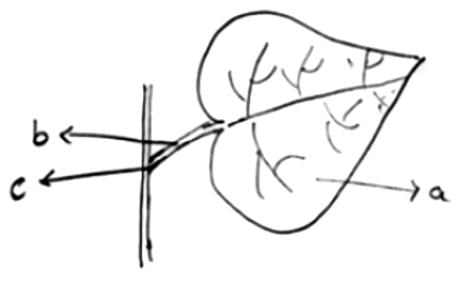NEET Exam > NEET Tests > Test: Roots, Stems and Leaves - 2 - NEET MCQ
Test: Roots, Stems and Leaves - 2 - NEET MCQ
Test Description
10 Questions MCQ Test - Test: Roots, Stems and Leaves - 2
Test: Roots, Stems and Leaves - 2 for NEET 2025 is part of NEET preparation. The Test: Roots, Stems and Leaves - 2 questions and answers have been prepared
according to the NEET exam syllabus.The Test: Roots, Stems and Leaves - 2 MCQs are made for NEET 2025 Exam.
Find important definitions, questions, notes, meanings, examples, exercises, MCQs and online tests for Test: Roots, Stems and Leaves - 2 below.
Solutions of Test: Roots, Stems and Leaves - 2 questions in English are available as part of our course for NEET & Test: Roots, Stems and Leaves - 2 solutions in
Hindi for NEET course.
Download more important topics, notes, lectures and mock test series for NEET Exam by signing up for free. Attempt Test: Roots, Stems and Leaves - 2 | 10 questions in 10 minutes | Mock test for NEET preparation | Free important questions MCQ to study for NEET Exam | Download free PDF with solutions
Detailed Solution for Test: Roots, Stems and Leaves - 2 - Question 1
Detailed Solution for Test: Roots, Stems and Leaves - 2 - Question 2
Test: Roots, Stems and Leaves - 2 - Question 3
Arrangement of leaves on a stem branch is: [MPPMT–1996]
Detailed Solution for Test: Roots, Stems and Leaves - 2 - Question 3
Test: Roots, Stems and Leaves - 2 - Question 4
Which of the following statements is/are false about the leaf?
a. The leaf develops at the node and bears a bud in its axil.
b. The leaf is the most important vegetative organ for photosynthesis.
c. Pulvinus provides rigidity to the leaf blade and acts as a channel for transporting water, minerals and food materials.
Detailed Solution for Test: Roots, Stems and Leaves - 2 - Question 4
Test: Roots, Stems and Leaves - 2 - Question 5
Which among the following is correct about the following structure?

Detailed Solution for Test: Roots, Stems and Leaves - 2 - Question 5
Test: Roots, Stems and Leaves - 2 - Question 6
Which among the following is incorrect about phyllotaxy?
Detailed Solution for Test: Roots, Stems and Leaves - 2 - Question 6
Test: Roots, Stems and Leaves - 2 - Question 7
Which among the following statements is incorrect about stem?
Detailed Solution for Test: Roots, Stems and Leaves - 2 - Question 7
Detailed Solution for Test: Roots, Stems and Leaves - 2 - Question 8
Test: Roots, Stems and Leaves - 2 - Question 9
What is the primary function of the root cap in a plant's root system?
Detailed Solution for Test: Roots, Stems and Leaves - 2 - Question 9
Test: Roots, Stems and Leaves - 2 - Question 10
Which type of root system is characterized by a main root that grows deep into the soil and bears several lateral roots?
Detailed Solution for Test: Roots, Stems and Leaves - 2 - Question 10
Information about Test: Roots, Stems and Leaves - 2 Page
In this test you can find the Exam questions for Test: Roots, Stems and Leaves - 2 solved & explained in the simplest way possible.
Besides giving Questions and answers for Test: Roots, Stems and Leaves - 2, EduRev gives you an ample number of Online tests for practice
Download as PDF



















